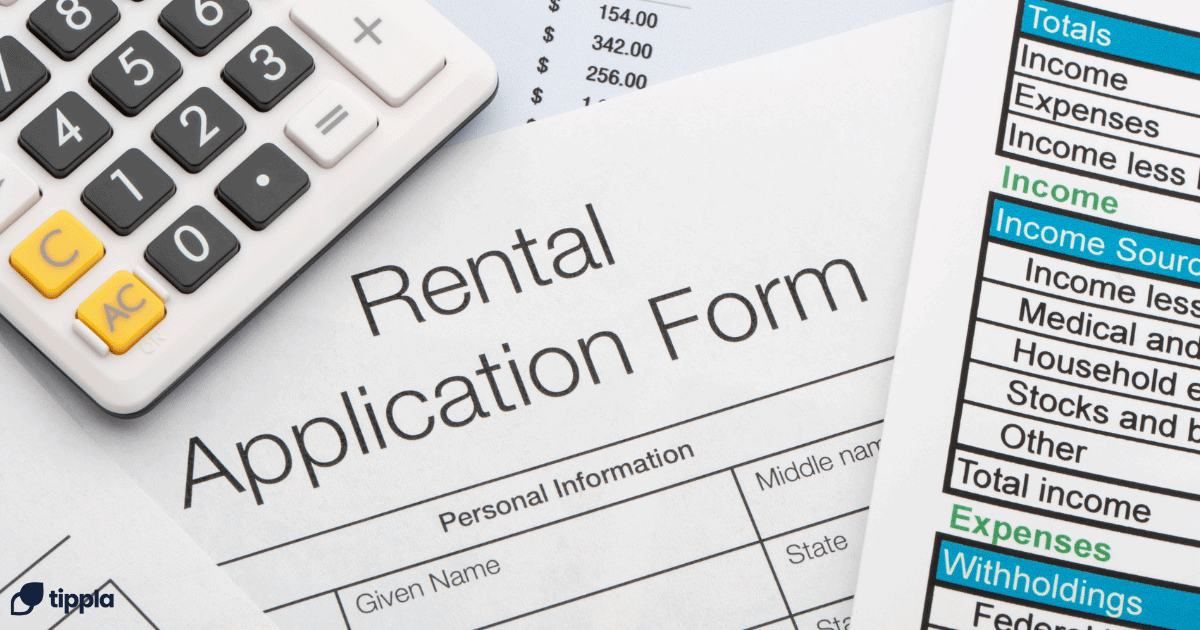Published in July 15, 2025
Understanding Superannuation in Australia

Superannuation, commonly known as “super,” is a crucial element of financial planning, ensuring individuals have a secure source of income when they retire. In Australia, superannuation is a mandatory system where employers contribute a portion of an employee’s earnings into a dedicated retirement fund. This system not only helps Australians maintain their standard of living post-retirement but also provides various investment options to grow their savings over time.
What is Superannuation?
The superannuation system has evolved significantly since its inception. It was first introduced in the 1980s as part of industrial awards, and the mandatory employer contributions were established with the Superannuation Guarantee (SG) in 1992. Initially, the contribution rate was set at 3%, but it has gradually increased over the years to its current rate of 10.5%. This evolution reflects the growing importance of superannuation in financial planning.
Key features of superannuation include employer contributions, personal contributions, and investment options. Employers are required to contribute a percentage of an employee’s earnings into a super fund, while employees can also make voluntary contributions to boost their retirement savings. Superannuation funds offer a variety of investment options, allowing individuals to choose a strategy that aligns with their risk tolerance and retirement goals. Additionally, superannuation provides significant tax benefits, such as concessional tax rates on contributions and earnings, which further enhance the growth of retirement savings.
How Superannuation Works
Superannuation operates through a combination of mandatory and voluntary contributions aimed at ensuring a stable retirement income. Here’s a breakdown of how it works:
-
Superannuation Contributions:
- Employer Contributions (Superannuation Guarantee): Employers are legally required to contribute a minimum percentage of an employee’s earnings into a super fund. As of now, this rate is 10.5%, but it is set to gradually increase to 12% by 2025.
- Voluntary Contributions: Employees can make additional contributions to their super:
- Salary Sacrifice: Pre-tax contributions made by agreeing to forgo part of your salary, which can reduce taxable income and boost super savings.
- Personal Contributions: After-tax contributions that can also be claimed as tax deductions under certain conditions.
- Government Co-Contributions and Incentives: The government may contribute to your super if you meet certain income thresholds and make after-tax contributions. This is designed to encourage low- and middle-income earners to save for retirement.
-
Types of Superannuation Funds:
- Industry Funds: Non-profit funds generally run by employer associations and unions. They are designed to benefit members rather than shareholders.
- Retail Funds: Run by banks and financial institutions, these funds are available to the public and aim to make a profit for shareholders.
- Self-Managed Super Funds (SMSFs): Private super funds that individuals manage themselves, suitable for those who want more control over their investment choices.
- Corporate Funds: Established by companies for their employees, often tailored to the specific needs of the company’s workforce.
- Public Sector Funds: Designed for employees of federal and state government agencies, these funds offer benefits specific to public sector workers.
Choosing a Superannuation Fund
When choosing a superannuation fund, it’s essential to consider several critical factors to ensure you maximise your retirement savings and benefits.
Factors to Consider When Choosing a Fund
- Fees and Charges: All super funds charge fees, including administration, investment, and insurance fees. These can significantly impact your retirement savings over time, so it’s crucial to compare the fee structures of different funds. Use online calculators to understand the long-term impact of these fees.
- Investment Options and Performance: Look at the investment options each fund offers and their historical performance. Funds with a consistent track record of strong returns are generally more reliable. Consider the level of risk associated with different investment options to ensure they align with your retirement goals.
- Insurance Options: Most super funds offer insurance cover, including life insurance, total and permanent disability (TPD) insurance, and income protection. Review the types and levels of insurance coverage provided, as well as the cost of these insurances, to ensure they meet your needs.
- Customer Service and Support: The quality of customer service can vary between funds. Look for funds that offer excellent support, such as easy access to information, responsive customer service, and useful online tools and resources.
Comparing Superannuation Funds
- Using Comparison Tools and Resources: Utilise tools like ATO’s YourSuper comparison tool to compare different super funds based on fees, performance, and other key features. These tools can provide a side-by-side comparison to help you make an informed decision.
- Understanding Fund Ratings and Reviews: Research fund ratings and reviews from independent sources. These ratings can provide insights into the fund’s performance, management, and member satisfaction, helping you choose a fund that’s well-regarded and reliable.
Choosing the right superannuation fund requires careful consideration of these factors to ensure you are getting the best possible deal and maximising your retirement savings.
Superannuation Investment Options
Superannuation funds offer a variety of investment options to help you grow your retirement savings. Understanding these options and choosing the right one can significantly impact your financial future.
Overview of Investment Options within Superannuation Funds
- Growth Options: These invest predominantly in growth assets like shares and property. They aim for high returns but come with higher risk. Suitable for long-term investors who can tolerate market fluctuations.
- Balanced Options: These offer a mix of growth and defensive assets, such as shares, property, bonds, and cash. They aim for moderate growth with reduced volatility, making them a middle-ground choice.
- Conservative Options: These invest mainly in defensive assets like bonds and cash, with a smaller portion in growth assets. They aim for stable, lower returns with minimal risk, suitable for risk-averse investors or those nearing retirement.
- Cash Options: These invest in cash and short-term money market securities. They offer the lowest risk and returns, providing capital protection and liquidity. Ideal for those who prioritise safety over growth.
Understanding Risk and Return
Different investment options come with varying levels of risk and potential return. Growth options have higher risk but offer higher potential returns, while conservative options are lower risk with more stable, but smaller, returns. Assessing your risk tolerance is crucial in selecting the right option.
Diversification and Asset Allocation
Diversification spreads your investments across different asset classes to reduce risk. Balanced options typically offer built-in diversification, while other options may require you to diversify within your super fund manually.
Impact of Investment Choice on Retirement Savings
The choice of investment option can significantly affect your retirement savings. Higher-risk options may yield greater returns over time but with more volatility. Lower-risk options provide stability but might not keep pace with inflation.
Tips for Selecting the Right Investment Option
- Assessing Risk Tolerance: Consider your age, retirement timeline, and comfort with market ups and downs. Younger individuals might opt for growth options, while those nearing retirement might prefer conservative or balanced options.
- Reviewing Investment Performance Regularly: Keep an eye on your super fund’s performance and adjust your investment strategy as needed. Use tools and resources provided by your fund to track performance and make informed decisions.
Accessing Your Superannuation
Accessing your superannuation is an important step towards financial security in retirement. However, there are specific conditions you must meet to withdraw your super, and understanding these can help you plan effectively.
Conditions of Release
To access your super, you generally need to meet a condition of release. The most common conditions include:
- Retirement: You can access your super when you retire and reach your preservation age, which ranges from 55 to 60 depending on your birth year.
- Reaching Preservation Age: Even if you’re still working, you can start a transition to retirement (TTR) income stream once you reach your preservation age.
- Severe Financial Hardship and Compassionate Grounds: In certain situations, such as severe financial hardship or compassionate grounds like medical expenses, you might be able to access your super early.
Payment Options
Once you meet a condition of release, you can choose how to receive your super.
- Lump Sum Payments: This option allows you to withdraw a portion or all of your super in one go. It’s useful for significant expenses but can affect your long-term financial stability.
- Income Streams (Pensions and Annuities): These provide a regular income from your super savings. They can be account-based pensions or annuities, offering financial security over time.
Transition to Retirement (TTR) Strategy
The TTR strategy allows those who have reached preservation age to access part of their super while still working. This can help supplement your income as you reduce your working hours or boost your super balance by salary sacrificing more of your income into your super fund.
Choosing the right way to access your super depends on your financial needs and retirement goals. It’s wise to seek financial advice to make the most of your superannuation savings and ensure a comfortable retirement.
Tax and Superannuation
Understanding how superannuation is taxed can help you manage your retirement savings more effectively and take advantage of tax benefits.
Tax on Contributions
Concessional Contributions (Pre-Tax)
Concessional contributions include employer contributions (such as the Superannuation Guarantee) and salary sacrifice contributions. These contributions are taxed at a concessional rate of 15% when they are received by your super fund.
Non-Concessional Contributions (After-Tax)
Non-concessional contributions are those made from your after-tax income. They are not taxed when they are received by your super fund, as you have already paid tax on this money. However, there are limits on how much you can contribute each year without incurring additional taxes.
Tax on Superannuation Earnings
The investment earnings within your super fund, such as interest, dividends, and capital gains, are taxed at a rate of 15%. If your fund is in the pension phase, these earnings are generally tax-free.
Tax on Withdrawals
When you withdraw your super, the tax treatment depends on your age and the components of your super balance.
Tax-Free Component
The tax-free component typically includes your non-concessional contributions. If you’re 60 or older, withdrawals from this component are generally tax-free.
Taxable Component
The taxable component includes your concessional contributions and earnings. If you are under 60, you may need to pay tax on withdrawals from this component at your marginal tax rate, with a 15% tax offset. Once you turn 60, these withdrawals are usually tax-free.
Superannuation and Retirement Planning
Importance of Regular Superannuation Review and Consolidation
Regularly reviewing your superannuation is crucial for ensuring that your retirement savings are on track. By keeping a close eye on your super, you can identify opportunities to increase your balance and address any issues before they become significant problems. Consolidating multiple super accounts into one can simplify management and reduce fees, potentially boosting your retirement savings. It’s also essential to consider estate planning, which many overlook. Sort yours out with Willed to ensure your assets are distributed according to your wishes and not left to the government.
Checking Super Statements
Checking your super statements at least once a year helps you stay informed about your account balance, fees, and investment performance. This practice ensures that your super fund is working effectively for you and allows you to make informed decisions about any necessary changes.
Consolidating Multiple Super Accounts
If you have multiple super accounts, consolidating them into a single account can save you money on fees and make your super easier to manage. However, before consolidating, review the insurance coverage and benefits of your existing super accounts to ensure you do not lose any valuable features.
Strategies for Maximising Superannuation Savings
Increasing Contributions
One of the most effective ways to boost your superannuation savings is by increasing your contributions. You can do this through salary sacrifice or making voluntary after-tax contributions. Both strategies can help grow your retirement nest egg more quickly.
Reviewing Fees and Investment Options
Regularly reviewing the fees and investment options associated with your super fund is essential. High fees can erode your savings over time, so look for a fund with competitive fees and strong performance. Additionally, ensure that your investment options align with your risk tolerance and retirement goals.
Role of Superannuation in Overall Retirement Planning
Superannuation plays a vital role in your overall retirement planning. It serves as a primary source of retirement income for many individuals. To make the most of your super, integrate it with other income sources, such as government pensions, savings, and investments.
Combining Superannuation with Other Retirement Income Sources
A comprehensive retirement plan considers all potential income sources. Combining your superannuation with other savings and investment accounts, as well as any government benefits you may be eligible for, can provide a more stable and diverse retirement income.
Planning for Healthcare and Lifestyle Expenses in Retirement
When planning for retirement, consider potential healthcare and lifestyle expenses. These costs can significantly impact your retirement savings, so it’s essential to factor them into your retirement budget. Ensuring you have adequate health insurance and setting aside funds for unforeseen expenses can help protect your financial well-being in retirement.
Managing and Growing Your Superannuation
Tips for Growing Your Superannuation Balance
Growing your superannuation balance is key to ensuring a comfortable retirement. Here are some specific tips to help you boost your super:
- Making Additional Contributions: Consider making voluntary contributions to your superannuation. These can be concessional (pre-tax) contributions like salary sacrifice or non-concessional (after-tax) contributions. Both types can help you grow your super faster due to the power of compounding.
- Optimising Investment Choices: Review your super fund’s investment options to ensure they align with your risk tolerance and retirement goals. You might choose a growth option if you are comfortable with higher risk for potentially higher returns, or a conservative option if you prefer lower risk.
- Minimising Fees: High fees can significantly reduce your super balance over time. Regularly check the fees you are paying and compare them with other super funds. Switching to a lower-fee fund can save you money and help your super grow.
Using Financial Advice and Planning Services
Professional financial advice can be invaluable in managing and growing your superannuation. Here’s when and how to seek advice:
- When to Seek Professional Advice: Seek advice when you have a significant change in your financial situation, such as receiving a large inheritance, changing jobs, or approaching retirement. Professional advice can help you navigate these changes and make informed decisions.
- Finding a Qualified Financial Advisor: Look for advisors who are licensed by the Australian Securities and Investments Commission (ASIC). You can use resources like the Financial Planning Association of Australia (FPA) to find certified professionals. Ensure your advisor has experience with superannuation and retirement planning to get the best guidance.
Recent Changes and Future Trends
In recent years, Australia has seen significant changes to superannuation laws and regulations. From 1 July 2022, several changes were implemented, including adjustments to contribution caps and the introduction of the Retirement Income Covenant, which aims to ensure retirees have a regular income. These changes are part of ongoing reforms to make superannuation more effective and transparent for Australians.
Impact of Changes on Contributions, Taxes, and Access
These regulatory updates have influenced how Australians manage their superannuation. Increased contribution caps allow individuals to boost their retirement savings more efficiently. Additionally, changes in tax policies, such as the reduction in concessional contribution tax rates, provide more incentives for higher contributions. Access to superannuation funds has also been adjusted, particularly in response to the COVID-19 pandemic, allowing for early withdrawals under specific circumstances.
Future Trends in Superannuation
Technological Advancements
Technology is set to revolutionise how superannuation is managed. With the rise of digital platforms, individuals can now easily track and manage their super through mobile apps and online portals. These advancements aim to increase engagement and ensure more Australians are aware of their superannuation status and opportunities.
Policy Developments
Policy developments will continue to shape the landscape of superannuation. The government is expected to focus on policies that promote the long-term sustainability of the superannuation system, such as further increasing the Superannuation Guarantee rate and introducing measures to protect members from excessive fees and underperformance.
Changing Demographics and Their Impact on Superannuation
Australia’s aging population is one of the most significant factors influencing superannuation. As the population ages, there will be an increased focus on ensuring that superannuation funds can provide sufficient income in retirement. This demographic shift will likely lead to more personalised superannuation products and services tailored to meet the diverse needs of retirees.
Superannuation is a pivotal component of Australia’s retirement system, providing a structured way for Australians to save for retirement. Recent changes in superannuation laws aim to enhance the effectiveness of these funds, focusing on increasing contribution limits, refining tax benefits, and improving access conditions.
As technological advancements and evolving policy landscapes shape the future of superannuation, individuals must stay informed and actively manage their super to maximise their retirement savings. By understanding and adapting to these changes, Australians can better ensure a secure and financially comfortable retirement.
While we at Tippla will always do our best to provide you with the information you need to financially thrive, it’s important to note that we’re not debt counsellors, nor do we provide financial advice. Be sure to speak to your financial services professional before making any decisions.
Related articles

Credit Scores vs Credit Reports: Understanding the Difference in Australia
23/10/2023
Understanding the nuances of credit scores and credit reports...

Credit Enquiries and Rental Applications
09/12/2024
Credit Enquiries and Rental Applications in Australia: What Tenants...

How far do mortgage lenders look back on my credit report?
16/11/2023
Purchasing a home is a significant financial decision, and...

Subscribe to our newsletter
Stay up to date with Tippla's financial blog